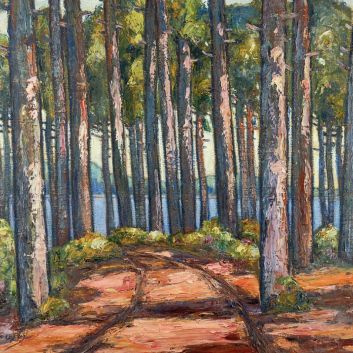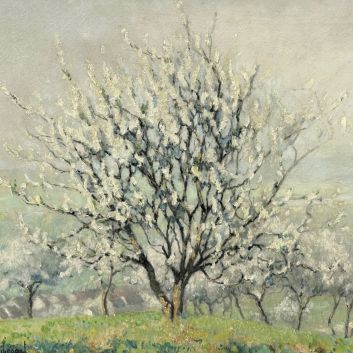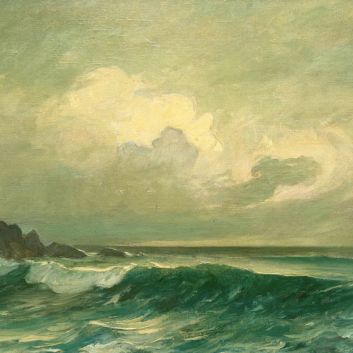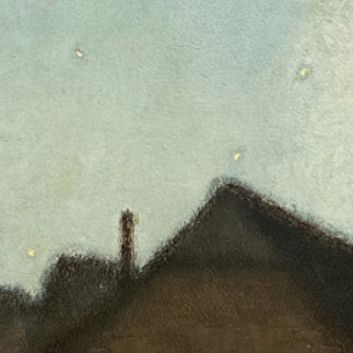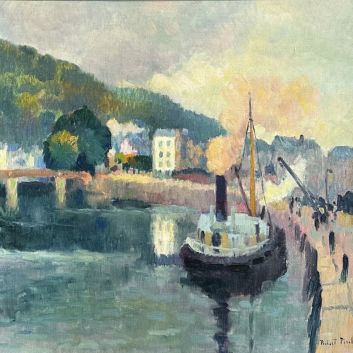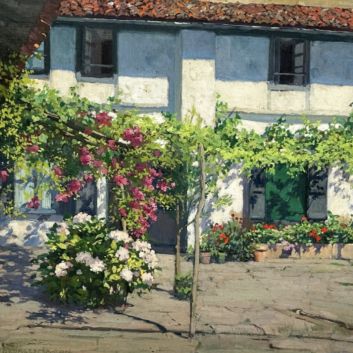Rating and value of paintings by Wilfrid Gabriel de Glehn
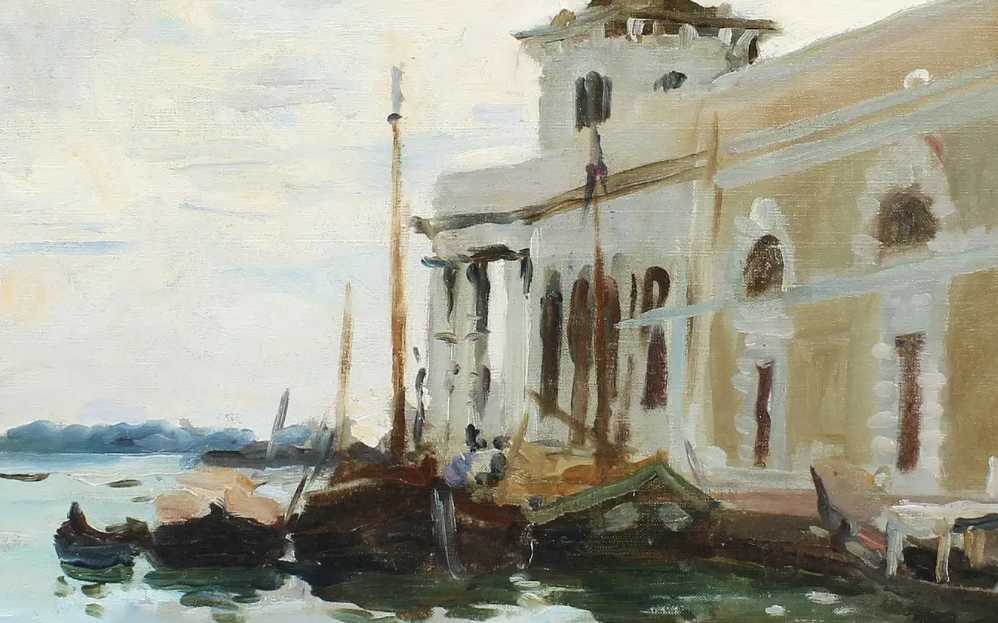
If you own a work by or based on the work of artist Wilfrid de Glehn and would like to know its value, our state-approved experts and auctioneers will be happy to advise you.
Our specialists will carry out a free appraisal of your work, and provide you with a precise estimate of its current market value.
Then, if you want to sell your work, we'll point you in the right direction to get the best possible price for it.
Artist's rating and value
An early post-impressionist artist, Wilfrid Gabriel de Glehn achieved artistic renown during his lifetime, especially on a regional scale.
Today, the artist's works are rare but highly prized on the market. Landscape scenes from the South of France are particularly sought-after by collectors.
A work by Wilfrid Gabriel de Glehn can fetch thousands of euros, as shown by his oil on canvas L'escalade - canots et voiliers, which sold for €236,600, against an estimate of €55,000 to €78,900.
Order of value from the most basic to the most prestigious
Technique used | Results |
|---|---|
Drawing - watercolor | From €40 to €30,000 |
Paint | From €170 to €236,600 |
Response in less than 24h
The works and style of Wilfrid Gabriel de Glehn
Wilfrid Gabriel de Glehn, influenced by movements such as Impressionism, Neo-Impressionism and Synthetism, stands out for his bold handling of color and play with light.
His works don't just depict realistic scenes: they seek to capture the particular atmosphere and light of the landscapes of southern France, particularly Provence and the Côte d'Azur, where he loved to paint. His color palette is often vivid, reflecting the intensity of Mediterranean landscapes, while his strong contours emphasize forms with elegance and simplicity.
What makes his canvases so unique is his desire to move away from purely realistic detail to express impressions. His sun-drenched landscapes exude a sense of warmth and calm, as if he were trying to convey the emotions these places evoke.
By playing with light contrasts, he manages to give each scene a special, almost poetic aura, where the viewer feels not only what he sees, but also the mood and energy of the moment.
Wilfrid Gabriel de Glehn, a British painter of the late 19th and early 20th centuries, shares an approach in which light and atmosphere are central to composition with many other Impressionist and Post-Impressionist artists, in both the French and British contexts.
A friend and collaborator of John Singer Sargent, De Glehn followed in the footsteps of Impressionism, while maintaining an academic rigor in his treatment of forms and figures.
Like Sargent or Claude Monet, he favored outdoor scenes, capturing fleeting moments with a luminous palette and light brushstrokes.
Artists such as Philip Leslie Hale and Cecilia Beaux also show stylistic affinities with De Glehn, adopting the same subtle mastery of chiaroscuro and transparent color to create works vibrant with energy and life.
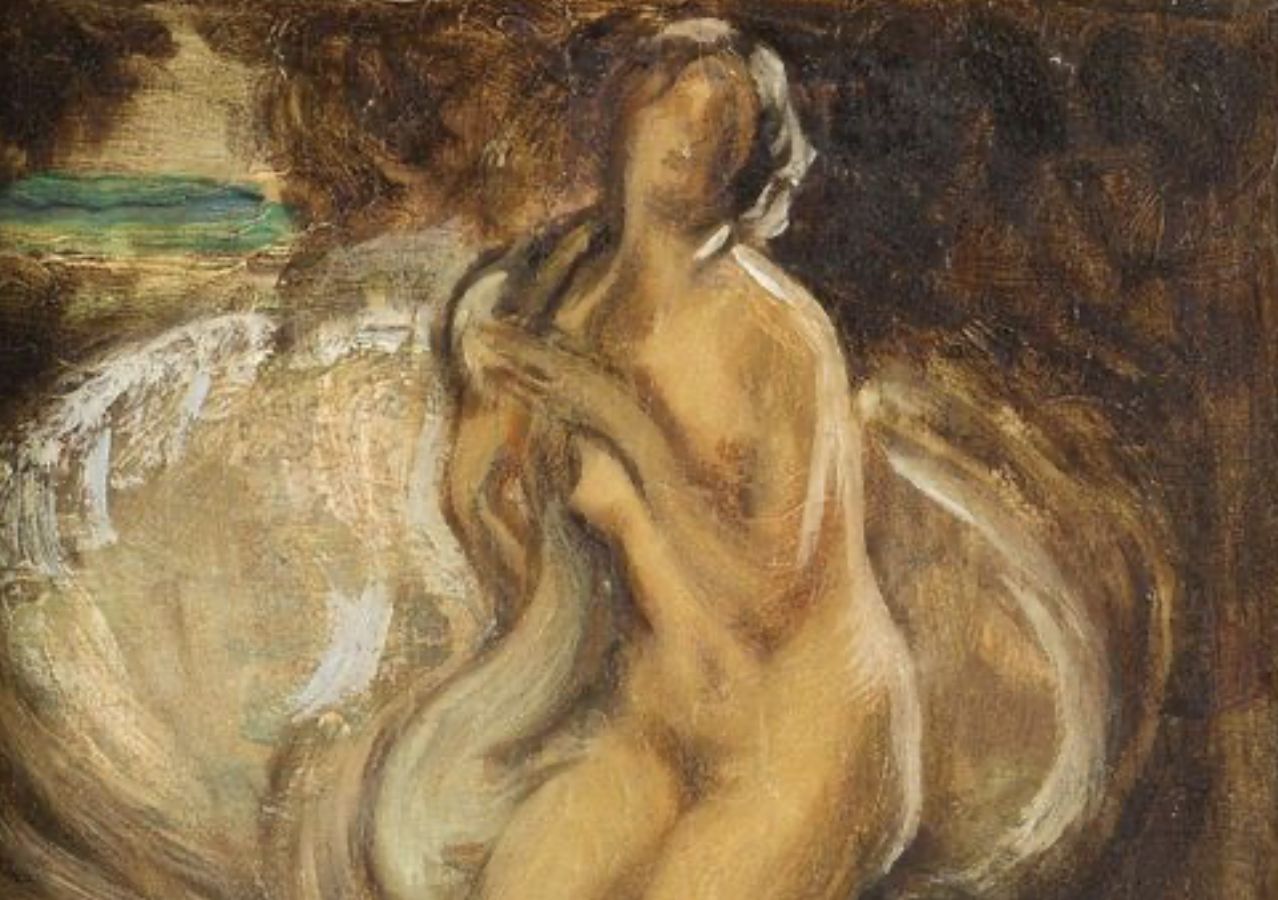
The life of Wilfrid Gabriel de Glehn
Wilfrid Gabriel de Glehn was a British artist of the early 20th century, renowned for his subtle mastery of light and landscapes, often inspired by his travels across Europe.
A close friend of John Singer Sargent, with whom he shared a passion for plein-air painting, de Glehn built his reputation on vibrant scenes bathed in soft light and serene atmosphere.
His works, halfway between Impressionism and a certain realism, are characterized by light brushstrokes and a rich palette, where each color seems to breathe. Although influenced by the Impressionists, he retains a concern for form and structure that gives his canvases a timeless elegance.
Although close to Impressionism, Wilfrid Gabriel de Glehn's approach is more structured than that of many French artists such as Jacques Gautherin, Paul Signac or Suzanne Valadon.
While de Glehn favors soft light and soothing compositions, Gautherin and Valadon often opt for more intense scenes, with more direct brushstrokes and a sometimes more dramatic touch.
In de Glehn's work, light envelops shapes without jarring contrasts, while Valadon plays with volumes and textures with an almost raw energy.
Paul Signac, a pioneer of pointillism, proposed a more fragmented vision of the world, with each color broken down into distinct points. De Glehn, on the other hand, prefers more fluid transitions, giving his landscapes a sense of continuity .
Where Signac celebrates the vibrancy of pure color, de Glehn remains closer to a naturalistic reality, even if light and atmosphere remain at the heart of his work.
So, while all these artists share a sensitivity to color and light, each approaches it in his or her own way. De Glehn anchors himself in a pictorial serenity, while Valadon, Signac and Gautherin explore more daring and contrasting paths, whether through material, form or technique.
Digital retrospective of W.G. de Glehn
Wilfrid Gabriel de Glehn's imprint on his period
Wilfrid Gabriel de Glehn is a well-known Impressionist in the UK, where he mainly worked and exhibited. In France, on the other hand, he is not well known to the general public, nor is he widely exhibited.
On the other hand, the artist's paintings, and those of the 20th century in general, are highly valued on the art market, and many French collectors appreciate his work and are ready to bid for one of his paintings.
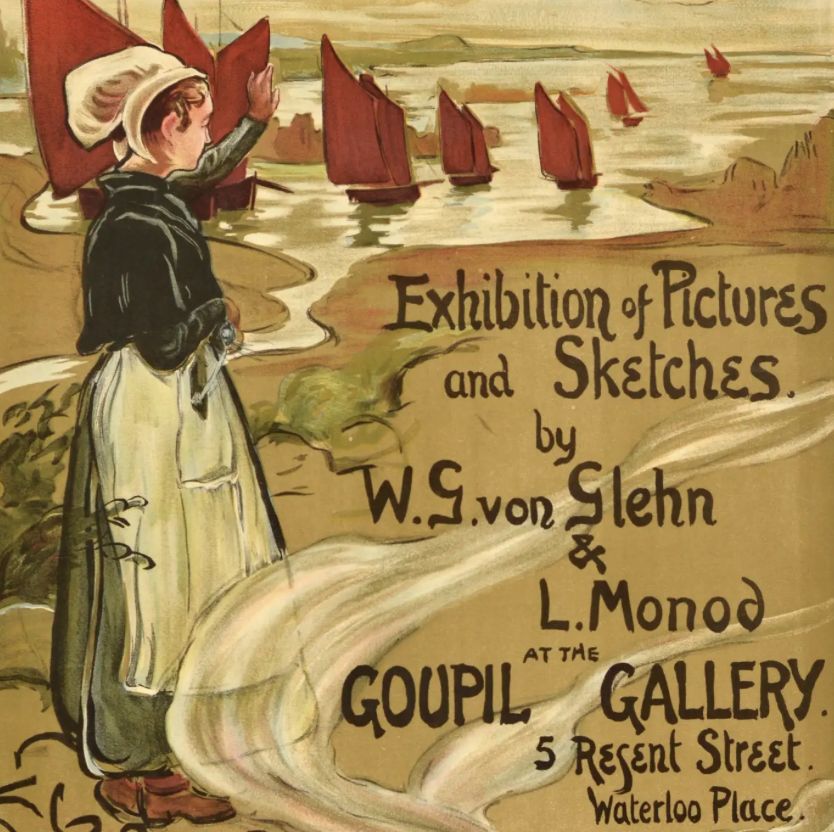
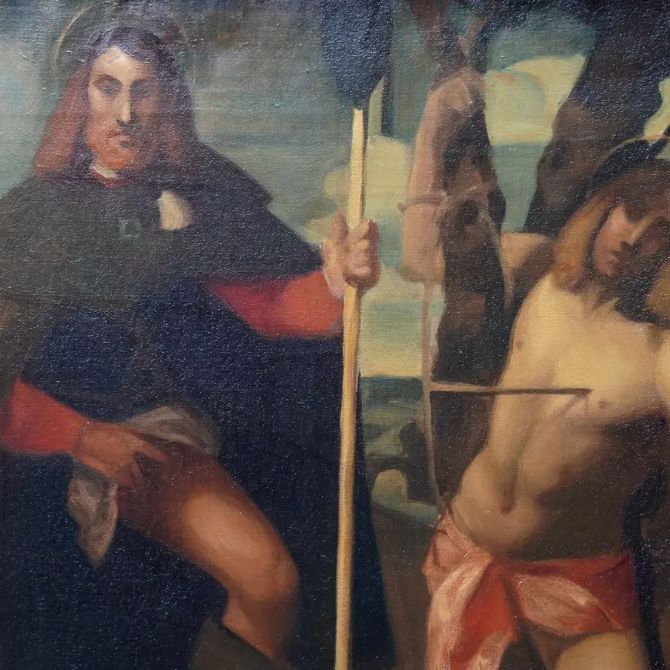
Focus on the view of Venice on the cover, W.G. de Glehn
This painting by Wilfrid Gabriel de Glehn perfectly illustrates the soothing atmosphere and subtle luminosity that characterize his work. The scene depicts a seaside, probably in Venice, where elegant buildings and boats moored at the quay create a harmonious, balanced composition.
De Glehn, true to his impressionist style, captures here a moment of calm, where the soft light of day grazes the surfaces with elegance.
The palette used is both luminous and soft, dominated by light shades of beige, ochre and blue. The building's walls seem almost to melt into the pale sky, an effect that testifies to the way de Glehn incorporates natural light into his compositions.
The fluidity of the brushstrokes, particularly visible in the sky and water, reinforces this sense of harmony between the elements. We sense that the artist is seeking to convey an impression of tranquility, rather than dwelling on overly precise details.
The boats in the foreground are painted with simple shapes and dark colors, creating a contrast with the brightness of the building and the sky. This play of contrasts adds depth to the scene, without upsetting the overall balance of the painting.
The water, for its part, is rendered in subtle reflections, reinforcing the idea of a moment of calm, almost suspended in time. Also notable is the absence of clearly defined human figures, a frequent choice for de Glehn, who seems to prefer letting natural and architectural elements speak for themselves rather than focusing on human activity.
The artist's impressionist touch can be seen in his use of color to suggest light and atmosphere, rather than to describe objects realistically. De Glehn does not hesitate to leave certain parts of the canvas open, as if inviting the viewer to complete the image mentally.
This approach, very characteristic of the Impressionists, allows us to focus on sensation rather than form.
The painting's composition is carefully built around the imposing building, which occupies a large part of the space. The eye is naturally drawn to this structure, whose architecture is suggested by a few precise lines and touches of light.
The windows and arches are barely sketched, but their presence lends an impression of monumentality, almost solemnity, to this otherwise simple scene. The blurred background, where the silhouettes of other buildings can barely be made out, contributes to the serene, airy atmosphere.
In short, this painting by Wilfrid Gabriel de Glehn demonstrates the artist's talent for capturing the ephemeral beauty of a landscape, without overloading the canvas with detail. The emphasis is on the harmony of color and form, and the ability to capture a moment of calm, where everything seems bathed in soft, diffused light.
What's most striking is the way de Glehn succeeds in conveying an almost tactile sense of atmosphere, where the eye wanders between glistening water and walls bathed in light.
His signature
W.G. de Glehn's works are not all signed, so expertise is important.

Appraising your property
If you own a Wilfrid Gabriel de Glehn painting, please feel free to request a free appraisal by filling in our online form.
A member of our team of experts and certified auctioneers will contact you to provide an estimate of the market value of your work.
If you are considering selling your work, our specialists will also guide you through the various alternatives available to obtain the best possible price, taking into account market trends and the specific features of each work.
Response in less than 24h
Related topics
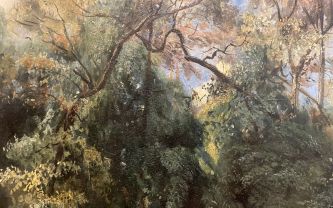
Rating and value of works, paintings, drawings by Paul Huet
Paul Huet was a 19th-century Romantic painter. His paintings and drawings are highly valued at auction.
Read more >

Rating and value of paintings by Louis Mau...
Boutet de Monvel is a neoclassical Orientalist painter who has produced works that are quoted and valued on the auction market.
Read more >

Rating and value of Russian paintings by Adolf Baumgartner Stoi...
Adolf Baumgartner Stoiloff is a Russian military painter who has produced works that are sought after by collectors, with a high value.
Read more >
Secure site, anonymity preserved
State-approved auctioneer and expert
Free, certified estimates
